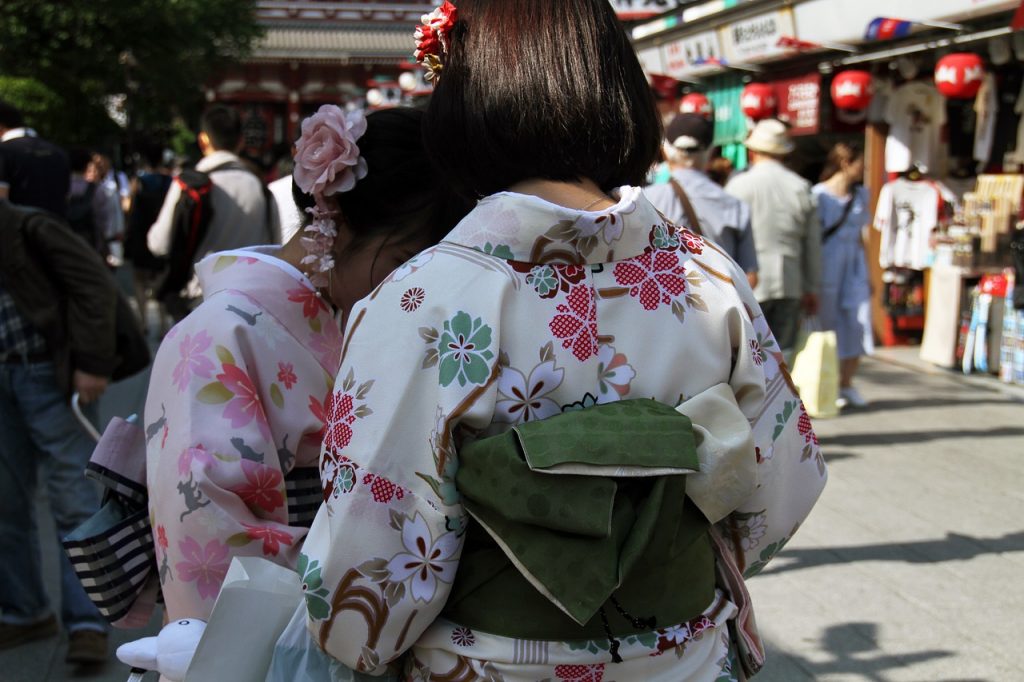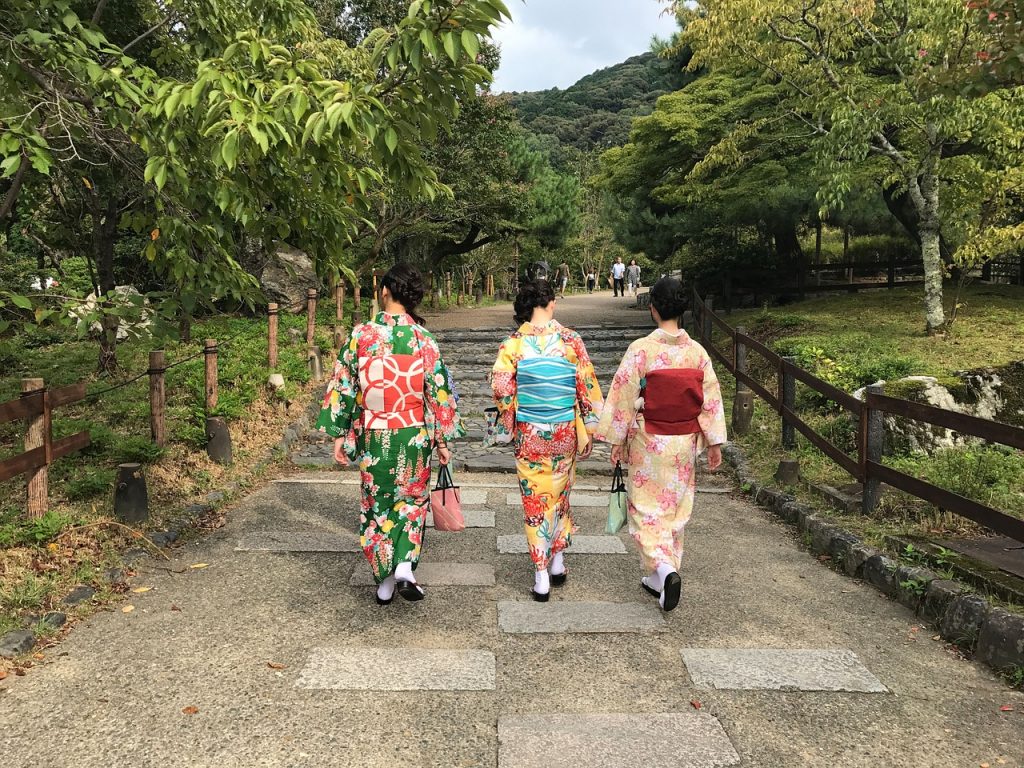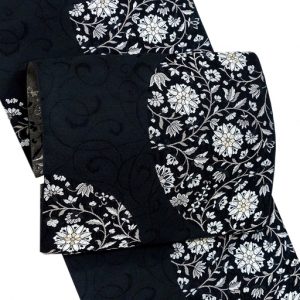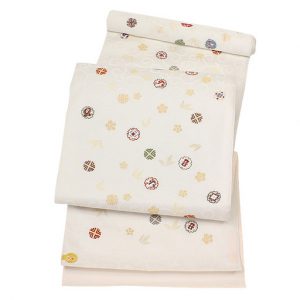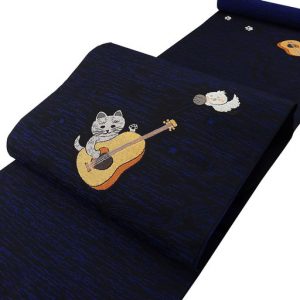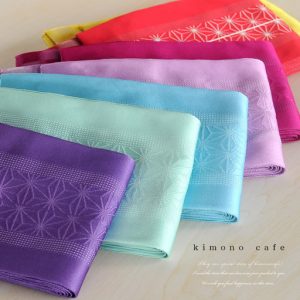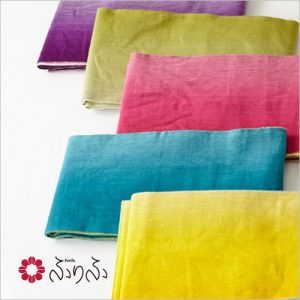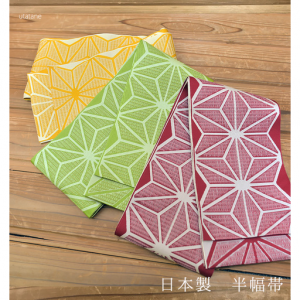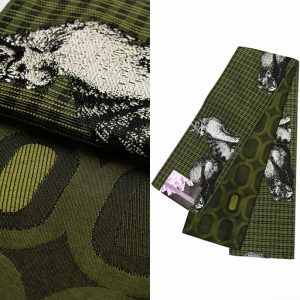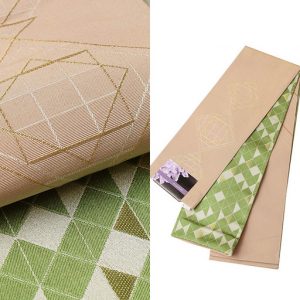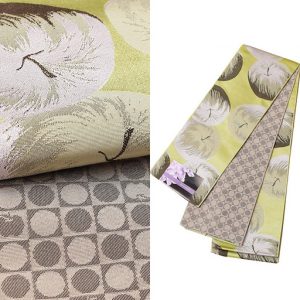Japanese Obi is the sash band for Japanese Kimono which keep fascinating us with wide variety of knotting styles and designs. Before you choose Japanese obi for your kimono let’s have crash course about Japanese Obi and 9 picks for your purchasing ideas.
Check Out Japanese Obi on Buyee
Table of Contents
History of Japanese Obi (Sash)
Japanese Obi as we know today was established during Edo period (1603-1868) . Before that obi simply had functioned as sash band for the robe and much narrower than today’s types. In early 17th century, popular prostitutes and kabuki female impersonators began to wear broader obi that became huge boom when popular kabuki female impersonator, Uemura Kichiya led the style wearing obi with nearly 30 centimeters width knotted with his own style, Kichiya-Knot. After Kyoho era (1716-35) standard obi size was fixed at 9-sun (27cm) in width, 1.2 jo (3.6 meters) in length. One of the most prevalent Knotting style, Bunko-obi was established around Horeki-Meiwa eras (1751-71) while Taiko-knot most prevalently used today was established in 1813. It was also around this era that anyone regardless of social status began to tie the knot on the backside.
Major Obi Styles
1. Maruobi
It is the highest grade of obi used for formal ceremonial occasions such as weddings particularly for the bride’s kimono or kimono for maikos (young geisha apprentices).As the original fabric is twice as wide as the regular size it is folded in half in its finish giving grandiose appearance.
2. Fukuro-obi
It is the most prevalently used obi style for formal dress such as furisode (popular formal kimono for young unmarried girls), tomesode (formal kimono for married women), iromuji (kimono with no color patterns), homongi (visiting kimono worn both for unmarried and married women), tsukesage (visiting kimono which can be used for semi-formal occasions)
3. Nagoya-obi
The third highest grade obi widely used both for formal and semi-formal occasions for visiting dress and casual kimono. Depending on situations, it can be broadened.
4. Fukuro Nagoya-obi
Narrower than Nagoya-obi (24 cm in width) and is widely used for both formal and semi-formal occasions
5. Hitoe-obi
Obi for summer dress without weaving patterns on the back side. Usually its width is about 24 cm but there are also narrower types.
6. Hoso-obi
Obi for casual dress such as yukata (casual summer kimono).
7. Nishijin-ori, Nagoya-obi
Nishijin is known as one of the most popular fabric weaving areas in Japan located about five kilometers north of Kyoto Station. When you select obi of pale and light color patterns, it could fit for visiting kimono for casual parties and for tea ceremony parties while as extra-broad obis of darker color patterns for komon (simple patterned kimono) may fit for viewing kabuki or modern theatrical plays.
8. Yukata-obi
Although Japanese women do not often wear kimono, yukata, casual summer dress is still popular among young Japanese girls.
9. Kyoshiori Reversible Obi
Kyoshiori is the brand name of half-width polyester obi 16.5 cm x 4.4 meter that can be used on both sides. It is wearable throughout the year. We recommend this obi for binding casual kimono wear such as yukata and komon (a type of visiting kimono).
After Word
Have you found Japanese Obi of your dreams? I am sure Rakuten offers a lot more Kimono related items to fulfill your life as a Japan enthusiast.

Service Flow
We bid on your behalf and ship the items you win to your address overseas! →See more

